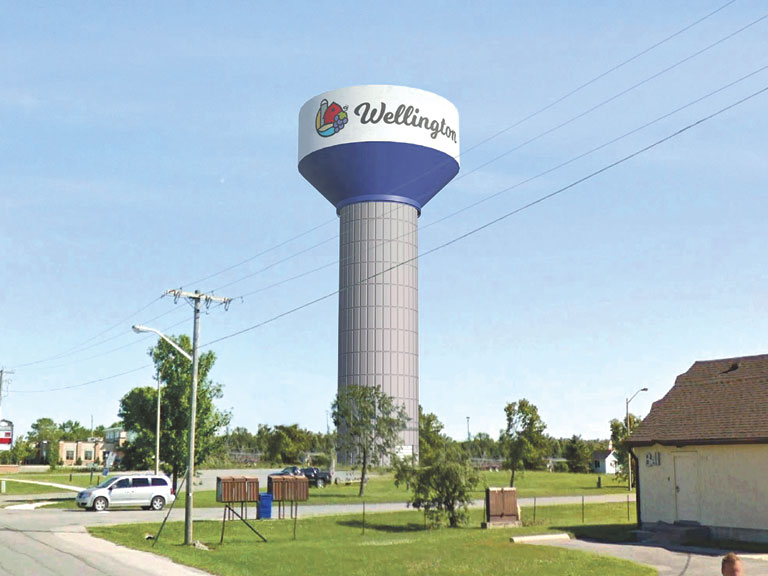County News
Testing assumptions

Council has committed to a second look at Wellington’s waterworks expansion
County council has committed to a third-party review of the assumptions underpinning the expansion of Wellington’s waterworks. The County has already committed $44 million to this project (water tower, wastewater overflow tank, and most recently, water and wastewater lines spanning the width of the village) on behalf of water ratepayers.
The 2021 Master Servicing Plan (MSP) proposes two more bits: a new water plant and supply line, and a wastewater plant. The plants are estimated to add another nearly $70 million to the project cost.
What are the assumptions to be tested? Such discussions tend to get bogged down in engineering complexity and the cost of delays. So, in simple terms, here are the basic questions that need to be tested.
IS WELLINGTON’S POPULATION EXPANDING BY FOUR TIMES TO 8,600 PEOPLE?
Prince Edward County’s population has clung to about 25,000 people for 140 years. Despite massive economic, domestic and global upheaval for more than a century, the County has resisted population expansion. Why is today different? Is massively expanding infrastructure realistic or prudent considering this well-established historic population trend? Furthermore, Watson and Associates’ most recent assessment of population growth forecasts a rate of growth of one per cent for the next two decades implying population in Wellington growing from 2,100 to 3,100 by 2064. Shouldn’t the plan be rightsized to fit Watson’s forecast?
WILL ONE MILLION SQUARE FEET OF COMMERCIAL, INSTITUTIONAL AND INDUSTRIAL DEVELOPMENT OCCUR IN WELLINGTON IN THE FORESEEABLE FUTURE?
The project financing relies on the equivalent of six Costco stores being built in Wellington. Further, to do so, prospective developers in Wellington must pay development charges ten times the rate in the rest of the County and many times more than anywhere else in the region. If commercial development falls short of this incredible assumption, who will fund the $30 million it is supposed to pay toward the waterworks expansion?
ARE THE PLANTS AT THE END OF THEIR LIFE?
Only after plans to redevelop Wellington’s waterworks were produced did this village learn its plants and pipes were reaching the end of their life. Earlier studies—and household experience—revealed that water pressure was on the lower end of the acceptable range. However, there were no reports or warnings that the water or wastewater plants were failing. In fact, the 2021 MSP recommended ways to extend the capacity and life of the existing plants.
Since then, the story has changed. It is now assumed as fact that these plants are exhausted and that the municipality uses development to help pay for new ones. Several observers familiar with the Wellington plants contend that they are in good condition and modular in design and can be expanded as the population grows. This assumption of end-of-life must be tested.
WATER AND WASTEWATER PLANTS ARE NEARING THEIR CAPACITY LIMITS?
Water usage has trended downward since household meters were installed in homes in the village. Villagers use less water, not more. On the wastewater side, big rain events have tested the wastewater plants limits. But otherwise, average daily wastewater flows are well within tolerable limits. A new water treatment plant will address water pressure worries, while the wastewater overflow tank should fix capacity issues in this treatment process. Meanwhile, as was noted before, Wellington’s existing plants were designed to be modular— to expand as needed.
The notion that the waterworks plants must be replaced to add capacity must be tested.

Comments (0)